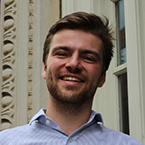- February 6, 2018
- Civic Data
This article originally appeared in Government Technology Magazine.
During the wave of hurricanes that tore through a number of coastal areas in September, crowdsourcing was a lifesaving tool, allowing residents in need of rescue to input their locations so that first responders could find them and giving relief workers better information to help them navigate the perilous landscape. Throughout those chaotic weeks, first responders used these volunteer-created maps to identify stranded residents and ensure that help could reach them safely. At the same time, governments used their own data on the status of flooding and locations of vulnerable residents to direct interventions. While collaboration between volunteers and governments improved throughout the storms, better coordinating interventions could make the next response much more effective.
Gaining the government’s trust to use crowdsourced tools was a challenge, especially in the earlier storms. “The government was a bit hesitant to rely on volunteers,” explained Matthew Marchetti, creator of the CrowdSource Rescue site.
Not having the government and volunteers on the same page during Harvey was a disadvantage. The inability to share data on who needed to be rescued led to redundant efforts from volunteer and government responders. “You might have three rescuers calling someone at the same time,” Marchetti explained.
However, throughout the storms, volunteer groups worked to improve coordination with governments. Ted Brassfield, project lead for CrowdRescue HQ (CRHQ) in Puerto Rico, said that during Harvey, CRHQ began reaching out to the Federal Emergency Management Agency (FEMA) to explore opportunities for coordination. During Irma, the group proposed models for collaboration, and began actively developing processes in conjunction with FEMA during Maria. The result was better communication with FEMA’s responders, and therefore fewer redundant efforts. Going forward, government should seek to deepen this collaboration with volunteers, moving toward a master map on which both groups can input information on residents in need of rescue and those already safe.
Pooling government and volunteer resources can also increase the accuracy of future response efforts. Marchetti understood the value of this collaboration and reached out to government during the storms in Puerto Rico. While volunteers had access to publicly available data from the National Weather Service and Puerto Rico’s Department of Transportation, government possessed other vital resources that were not readily available, like information on the location of elderly and low-income residents. Collaboration did improve throughout the storms — by the time Maria struck, “government was actively coordinating with groups like CrowdRescue HQ,” said Brassfield. In the days leading up to the next storm, government should build upon these advances, offering volunteers access to additional data and resources.
Governments’ initial hesitance to work with volunteers was understandable, considering questions about the reliability of crowdsourced data, but volunteers went a long way toward earning trust during the recent storms. Chris Bellmyer, an environmental specialist at Maryland Environmental Service who volunteered with CrowdRescue HQ in Puerto Rico, explained that the organization put in place a quality assurance and control process to lend authority to its data. “During data mining and input, volunteers reached out and re-confirmed with original sources,” he said. “We would try to reach out to people directly on social media to get clarification and more information about a particular situation, and some of our volunteers would ask their families that were in Puerto Rico whether or not they were experiencing or heard something similar.”
The leaders of these crowdsourcing efforts also see the success of these initiatives as a building block for more trust and collaboration down the road. “This was a very good proof of concept that’s changing conversations,” said Bellmyer. “We showed that crowdsourced data can be verified and can be more accurate than what government receives from their sources on the ground.”


 Chris Bousquet is a PhD student in philosophy at Syracuse University. Prior to that, Chris was a Research Assistant/Writer for Data-Smart City Solutions. Chris holds a bachelor’s degree from Hamilton College.
Chris Bousquet is a PhD student in philosophy at Syracuse University. Prior to that, Chris was a Research Assistant/Writer for Data-Smart City Solutions. Chris holds a bachelor’s degree from Hamilton College.
 Stephen Goldsmith is the Derek Bok Professor of the Practice of Urban Policy at the Harvard Kennedy School and the
Stephen Goldsmith is the Derek Bok Professor of the Practice of Urban Policy at the Harvard Kennedy School and the 
